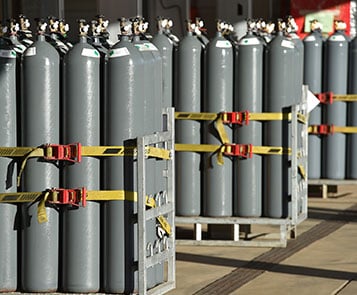Life Sciences EHS Talent: Managing the Uncertain Future
For the past several years, the life sciences industry seems to have been riding a roller coaster—and the trip doesn’t seem to be ending any time soon. The ups and downs in biotechnology have been unlike anything I’ve seen in 15-plus years in the environmental, health, and safety (EHS) business.
For me, there is one key takeaway—that two big drivers are coming together:
- There is an absolute need for any existing life sciences intellectual property (IP) in the pipeline to succeed—as quickly as possible!
- Biotech operations managers face, simultaneously, the need to constrain operational, marketing, and all other non-essential costs.
Juggling these two factors is a special challenge in these uncertain times. This applies particularly when it comes to the human intellect and talent spend, which is usually among the biggest expenses in biotech.
Biotech: Perils and Promises
Economic uncertainty plagues industry, as a recent survey from employment and labor law firm Littler indicates. Overall, life sciences employers face inflation, and many worry about the future. Some 77% of the Littler survey respondents were worried about how an uncertain economic future, with a potential economic downturn, will affect workforce planning and management.
So, what is ahead for life sciences employment? Looking at the big picture of the North American landscape will help us in our planning. Fortunately, there are some great insights from a recent report from global consultancy EY.
Among its findings:
- The demand drop for COVID-19 vaccines and antivirals caused life science revenues to dip in 2022—meaning the “pandemic sugar high” is gone.
- Since 2020, 30-plus biotechs have filed for bankruptcy.
- The industry is headed for a patent cliff. For instance, 2023 will see the expiration of five biologic patents, worth billions of dollars.
- The biotech IPO market dropped 93% since 2021. In 2022, most forms of biotech financing, including venture capital funds, have largely dried up.
On the bright side, the long-term big picture is rosy, according to another survey, from research consultancy Nova One Advisor. The United States biotechnology market was worth $390.1 billion in 2021 and this is expected to grow at a compound annual growth rate (CAGR) of 13% until 2030. Hopefully, the industry will soon stabilize, and we’ll see reliable and predictable growth. But in the meantime, we must face the difficulties as best we can, with the info we have.
Biotech Workforce Uncertainty Ahead
So, we see that biotechnology organizations demand constant innovation—while maintaining smart, streamlined operations. And enabling both of these objectives requires access to the best and freshest EHS ideas and skills. This rule applies even if life sciences’ investment dollars and initial public offerings (IPOs) are scarce, as they are today.
These have been interesting times for life sciences careers, indeed. And on the biotech roller coaster, certain organizations will have rougher rides than others. Major factors that will determine how rough the ride is include the subsector (genomics, cell biology platforms, nanotech) and region (or regions) where the organization operates.
Some of the other factors contributing to labor complexity include:
- The permanent talent acquisition process: When in growth mode, organizations always need talent, for both the regular daily biotechnology technical and operational tasks (such as cleaning, maintenance, and compliance), and for production and R&D. Recruiting, onboarding, and retaining the best workers is as hard as ever. This also is a major drain on management time and resources, as well as expensive in this competitive biotech employment market. Sometimes the ideal person for a role may not be in-house, and filling the slot requires external acquisition.
- An impending retirement cliff: Also driving the churn is the graying workforce. As of 2020, according to EHS industry publication Safety + Health, 24% of all workers were 55-plus—a nearly 20% jump from 2010. And, says the employment website Zippia, the average age of EHS managers is 44 years. As the aforementioned EY report states, “shifts in demographics and access to skilled workers have put constraints on talent.”
- The lure of the next gig: The life sciences workforce rotates constantly. New employees fill entry-level positions, then move up as quickly as they can—or leave for other opportunities. So, the best people are always the biggest hire risk. They may leave for more money or prestige, or just for a change of place. The “Great Resignation” taught us that we never know when our colleagues are seeking greener pastures.
- The baseline high price tag of full-time employees: Talent tends to be one of the biggest expenses for a company—and for small R&D firms, it can be major budget strain. So, for EHS workers, securing and retaining the best people is as tough—and typically tougher—than it is for other similar industries requiring such specialization and unique technical requirements.
- Regional employment cost spikes: As we mentioned above, talent is expensive across the board. But high living costs in biotech hot spots like Boston, San Diego, or San Francisco are making it harder for biotech workers residing there to survive comfortably. This applies especially for those at the entry level. So, management must pay a premium for talent in the most competitive regions—while facing shrinking profits. (That is, if they are already selling their products.)
- Management-administrator distractions: Some of the most routine EHS functions, such as hazmat waste disposal, are necessary. But they are also not necessarily the best use of time for an R&D manager who is already juggling other important tasks, like innovation or training.
- Stretching the existing front line: Across the board, organizations face the need to run as lean as possible. So, doing more with fewer people is sometimes a necessity. Having a handful of workers performing the tasks that usually require a dozen is far from ideal. This especially applies when these workers must also perform complex EHS and compliance tasks—and errors can be costly in money and time.
Partnering for Life Sciences Talent
There is good news. Managers unable to reconcile their budgets with their talent demands do have a remedy. Fortunately, proven life sciences EHS partners can reliably plug all talent gaps. This can be done for fixed, transparent, and reasonable costs, and with service-level agreements (SLAs) that maintain optimal execution. Partner team members can integrate throughout all operations—or only in those areas where it makes sense for the client.
A workforce partner should offer:
- Quality staff teams with the right mix of skills and insights, capable of quick adaption to your needs and operation
- Verified technical capabilities with on-site teams possessing all relevant certifications and academic credentials required for the level of work they will be performing
- Accountability from the partner, throughout the entire chain of command, from the vendor executives to the team members performing the specific on-site EHS tasks
- Flexibility to provide the right services for your needs, on-demand, into the future
- Commitment to your goals, ensuring your success is how they measure their success
Ready to discuss your life sciences employment needs? I invite you to explore EHSOne®, a revolutionary way to manage and improve your EHS program and overall operational culture. It’s an EHS industry first, providing a new model of on-site waste management—and it relies on the best on-site team members available.
Reach out to us today to learn more!






